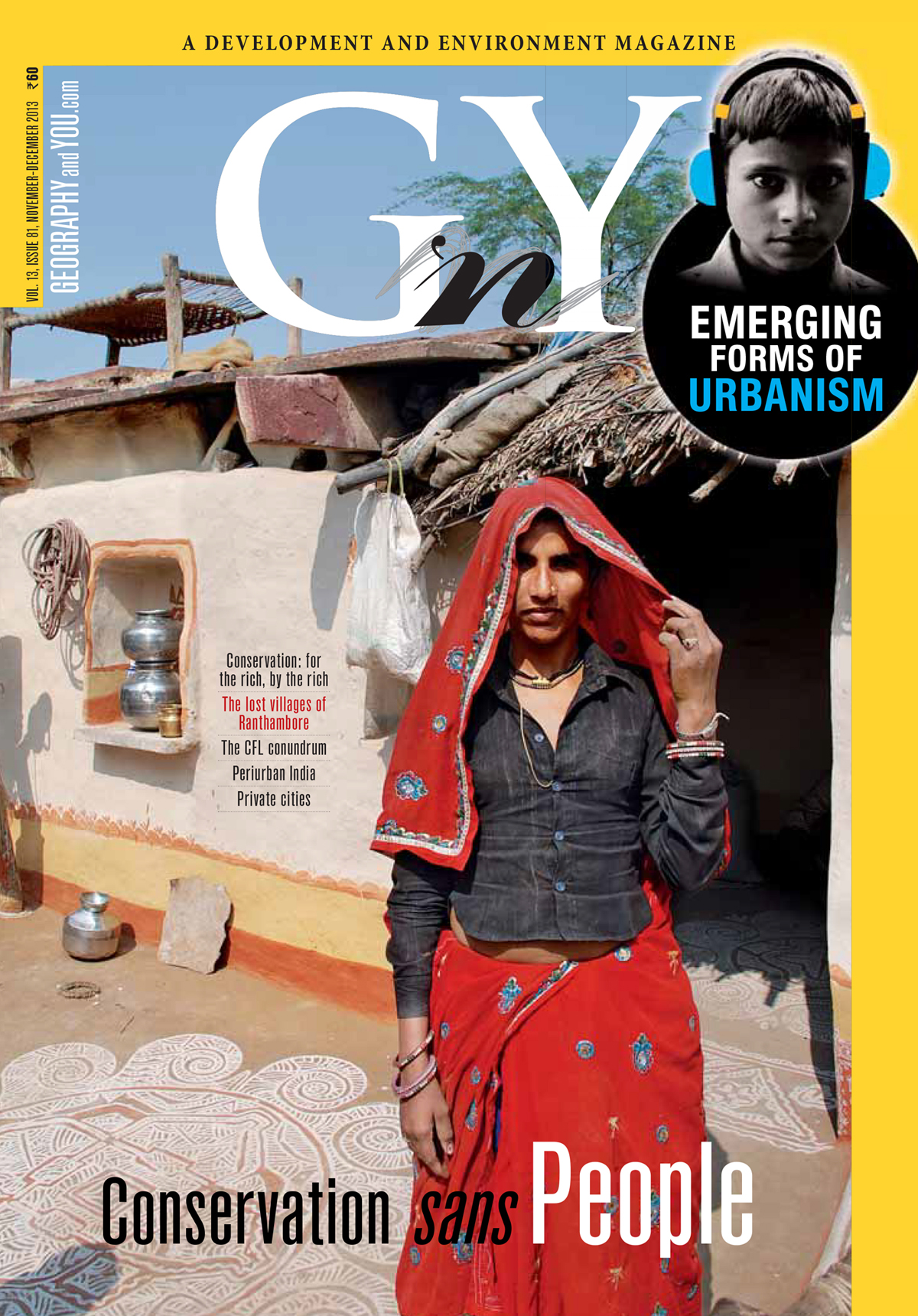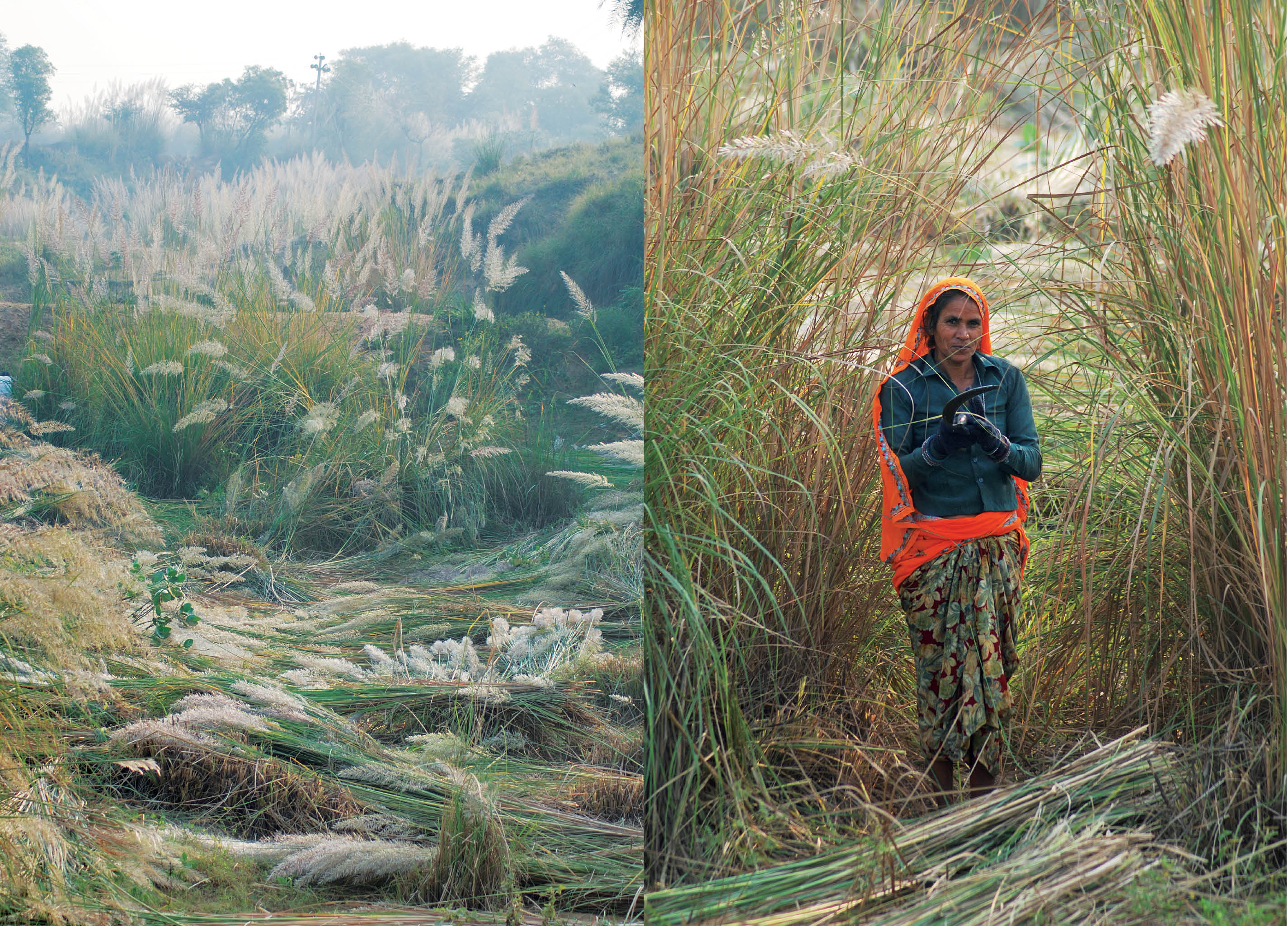
Inside this issue
Ecosystem Intervention
As India’s poor are being thrown out of forests to make space for a growing tiger population, hundreds of affluent investors and users continue to take their safari thrills.
At the turn of the 20th century, there were estimatedly 40,000 tigers in India. Today the figure stands at 1,706. Clearly, the big cats roaming the country’s 81,881 sq km of tiger habitat are in need of urgent attention.
The decision to establish ‘inviolate spaces’ for tigers has resulted in the relocation of villages located in the core areas of the Ranthambore Tiger Reserve. The study throws light on the fragmented lives of the villagers and raises questions about the necessity of relocation.
Breaking away from tradition, The Other Hundred, a photo-book project, tells stories of a 100 people who are not rich or famous, but deserve to be celebrated for their extraordinary lives.
Water transport
Although a safe and energy efficient mode of transport, waterways still remain underdeveloped.
Water transport is an eco-friendly and low-cost alternative to road, especially for bulk commodities resulting in incremental benefit to the consumer in the form of reduced prices. Changes in the river morphology would ensure low cost all-season transport with enhanced channel depth, which would reduce flooding at the same time.
Toxic india
Mercury is poisonous in any form. Neurological and behavioural disorders may be observed after inhalation, ingestion or dermal exposure of different mercury compounds.
Though CFLs consume a fifth of the energy required by incandescent lamps, they contain highly toxic mercury. The absence of fixed standards for mercury content and the lack of disposal norms, even a decade after CFLs were introduced in India, mean there are huge quantities of mercury lying in our waste, seeping into our atmosphere and entering our food chain.
LEDs consume less energy, have better light quality and are robust. Once the drawbacks - high cost and photobiological effect - are resolved, they may allow the phase out of mercury-containing CFLs.
Urban india
With the rise of small towns and cities, urbanisation in India is far more diffused compared to the past. However, it is largely dependent on economic activities that have weak linkages in terms of value-addition and employment.
India’s periurban centres can play a crucial role in creating a balanced urbanisation structure. Yet, they are often left out in the planning process. The essay highlights the concerns of these neither-rural-nor-urban centres and brings forth the ramifications of ignoring these spaces in the Indian context.
Temporary labour migration is a survival strategy of the rural poor in India—more prevalent in the country’s northern and eastern states. However, intra state differences exist with pockets of poverty even within prosperous states, from where socially and economically disadvantaged groups migrate. The phenomenon calls for effective social protection programmes to augment the inadequate livelihood opportunities and negligible access to health care for temporary labour migrants.
The private city is an emerging urban trend that could circumvent democratic processes at the local level, by vesting the authority to govern the area to private parties. This form of governance demonstrates a substantial shift from modernist tradition of democratic governance in urban areas. It is thus imperative to bring the discussion into the public sphere and debate the structure and effects of privatising urban governance.
In brief
Dear readers India is a country of diversity. Yes, indeed, so diverse are we that every policy of ours reflects this confused state of affairs. No unified civil code, no single national language, no single conservation policy, no integrated education syllabus, so on and so forth—the tenet of Indi

